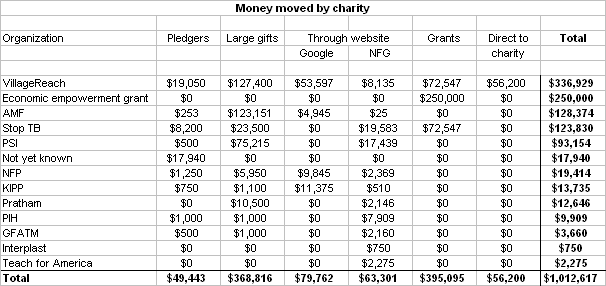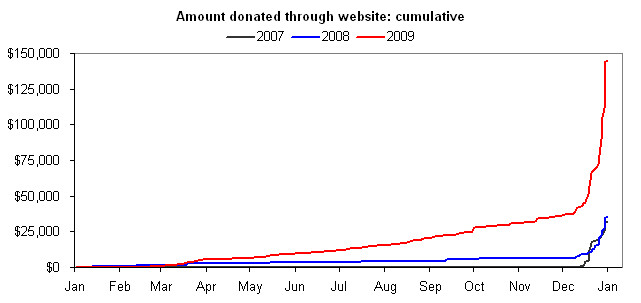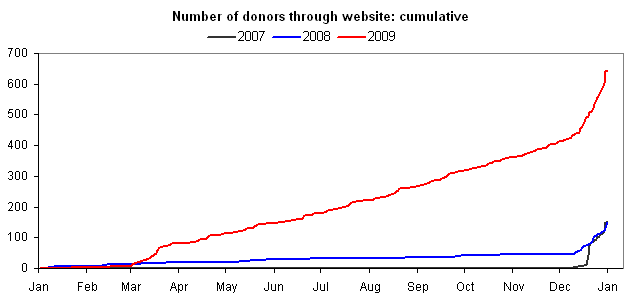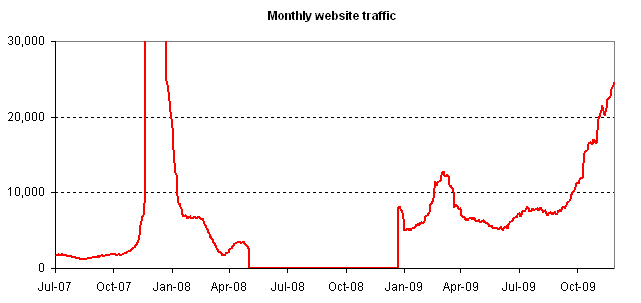Before we start giving our answers to the questions of this post, I wanted to share some raw data that we look at to gauge how things are going.
The charts/tables below cover the following:
- “Money moved,” i.e., donations made to GiveWell-recommended charities due to GiveWell’s research
- Website traffic.
This is just a subset of the information we have. We’ll be releasing a more complete set of charts/tables/data shortly.
The table below shows the support each of our recommended charities received in 2009. Update, 1/8/2010: VillageReach sent us an updated file that includes donors through the end of 2009. The updated table is below. Note: VillageReach’s total fell as we discovered that we had erroneously double-counted some funds.

You can view the original table we posted here.
- “Pledgers” refers to people who made GiveWell Pledges (advance commitments to give based on our research) in 2008, before our recent report was completed, and followed through on these commitments in 2009.
- “Large gifts” refers to donors who made large gifts, and directly told us (and the charities they were giving to) that GiveWell’s research had been the key factor in where they gave.
- “Economic empowerment grant” refers to a grant made directly by GiveWell, with funds from a single donor.
- “Through website” refers to gifts made through the “Donate Now” buttons on GiveWell.net (some through Google and some through Network for Good (NFG)).
- “Grants” refers to grants made directly by GiveWell, mostly with funds that were restricted by donors for regranting (we also granted just under $15,000 in unrestricted funds).
- “Direct to charity” refers to donations that VillageReach received, not through GiveWell’s website, and believes it can confidently attribute to GiveWell (this is due to the fact that VillageReach is a relatively small organization that does not get many donations from unfamiliar individuals). We are still awaiting data from 12/22/09-12/31/09, so we expect the final version of this number be higher.
The following two charts show the amount donated and number of donors through the GiveWell site, comparing 2007-2009 (and the beginning of 2010).


Finally, we show monthly web traffic to the GiveWell site and blog. Two notes: (1) we unfortunately lost tracking for much of 2008 — that explains the lack of data during that period. (2) We had an immense spike on 12/20/2007 due to media coverage; we’ve purposefully set the left-axis as it is to make it easier to view the rest of the chart.

